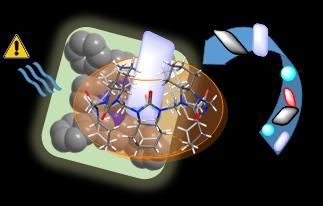Three patents available for biosynthesis of pyrethrins
Advertisement
Wageningen scientists have discovered the refined way in which the pyrethrum plant protects its seedlings against insect damage, fungi and competition from other seedlings. They isolated the various genes for the production of natural pyrethrins, the most familiar and commonly used biopesticides (including in organic agriculture). The research resulted in three patents that are largely available in license form to plant breeders, seed coating companies and producers of biopesticides.
“Approximately half a billion dollars is spent on pyrethrins globally every year,” says Maarten Jongsma, senior Bioscience scientist at Wageningen UR. “After WWII, natural pyrethrins were replaced by synthetic ones, but we are increasingly aware of the poor degradability and risks of synthetic pesticides. As a result, natural pyrethrins are making a spectacular comeback. Using our new patents, breeders can optimise the biosynthesis of pyrethrins by increasing the yield and steering production in the right direction, as some pyrethrins are more effective than others.”
Breeders can also build the mechanism for producing pyrethrin into other plants – to produce pyrethrins and/or enable the plants to protect themselves against fungi and insects – or into micro-organisms that will then produce biopesticides. Producers of biopesticides can register pyrethrins as organic fungicides that are already registered for use as insecticides.
Natural defence via ‘immunisation’
The scientists unravelled the refined mechanism for natural ‘seed coating’ in which pyrethrum plants use pyrethrins to protect their seedlings from fungi and insects, and published their findings in Plant Cell. According to Jongsma, the natural seed coating can also be useful for other crops.
Pyrethrum seedlings are actually provided with a double defence by the mother plants: in addition to pyrethrins to ward off micro-organisms and insects, they also benefit from so-called sesquiterpene lactones, a compound that – like pyrethrins – belongs to the terpenoid group. Terpenoids occur in the soil immediately around the seed where they slow down fungi and the root growth of competitive seedlings. “Remarkably, one of the building blocks of pyrethrins, a monoterpene, is not produced in the tegument but in the glandular trichomes on the tegument and sent into the tegument from there. Only after esterification into pyrethrin has taken place and the seed has dried does the embryo extract these substances from the tissue produced around it by the mother plant. This is a kind of immunisation that helps the young plant survive, and involves a very complex pathway which has now been unravelled. The finding that the glandular trichomes can direct various produced substances into the plant was an entirely new scientific discovery.”
Three patents available
The research is part of a TTI Green Genetics project, co-financed by two Dutch plant breeding companies. So far it has resulted in two dissertations, three patents and six published articles, while four other articles are still in the pipeline. The three patents are largely available for use by third parties via licenses. The scientists isolated the genes for the production of natural pyrethrins and sesquiterpene lactones. Based on this Jongsma expects interesting new applications of these compounds as fungicides or in organic seed coating. “Take the tomato plant, for instance, which also contains countless glandular trichomes. It may be possible to develop tomato plants that also produce pyrethrins in these glandular trichomes, which would help them protect themselves from attacks in a more efficient way.”
Other news from the department science
These products might interest you
Most read news
More news from our other portals
See the theme worlds for related content
Topic world Synthesis
Chemical synthesis is at the heart of modern chemistry and enables the targeted production of molecules with specific properties. By combining starting materials in defined reaction conditions, chemists can create a wide range of compounds, from simple molecules to complex active ingredients.

Topic world Synthesis
Chemical synthesis is at the heart of modern chemistry and enables the targeted production of molecules with specific properties. By combining starting materials in defined reaction conditions, chemists can create a wide range of compounds, from simple molecules to complex active ingredients.






























































